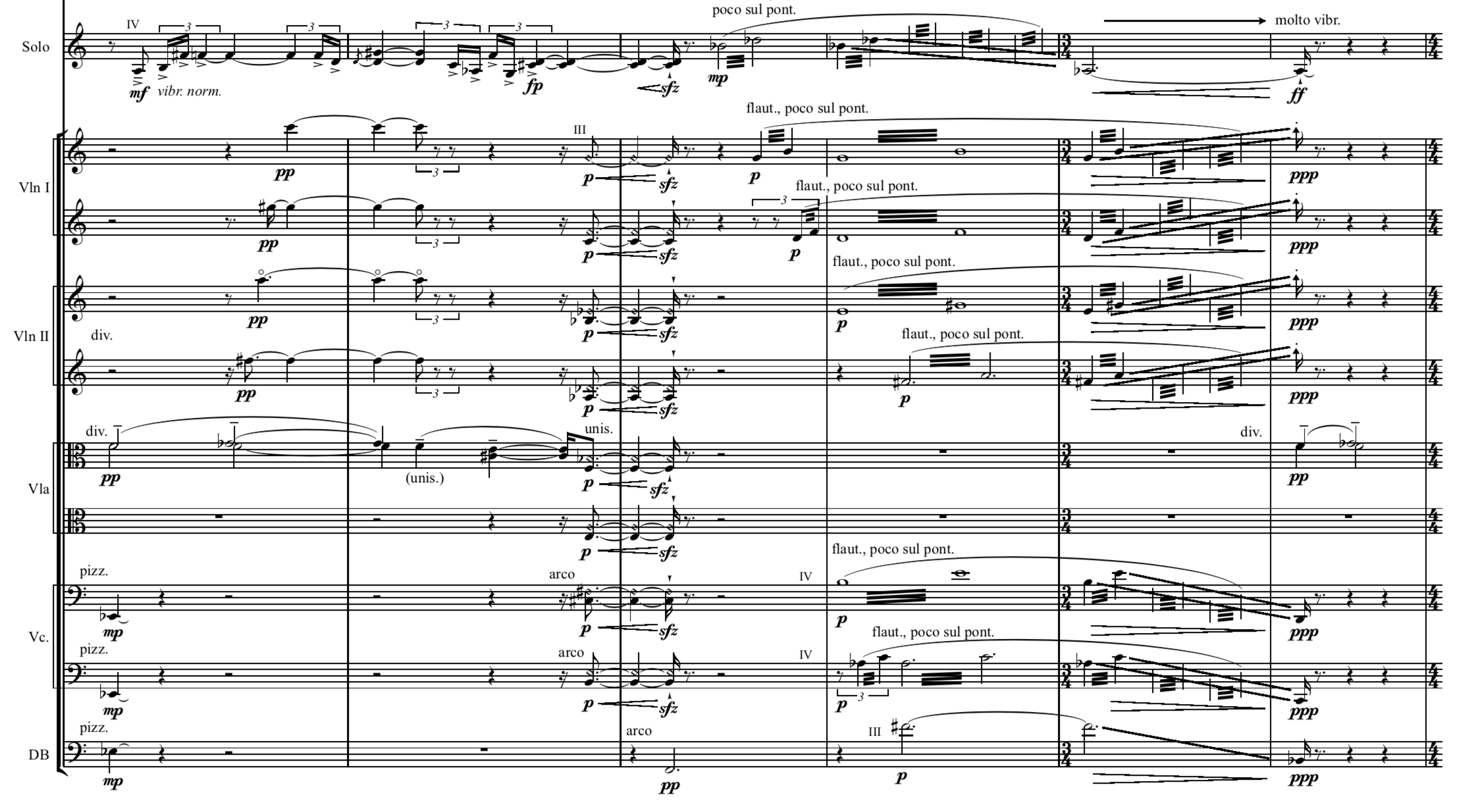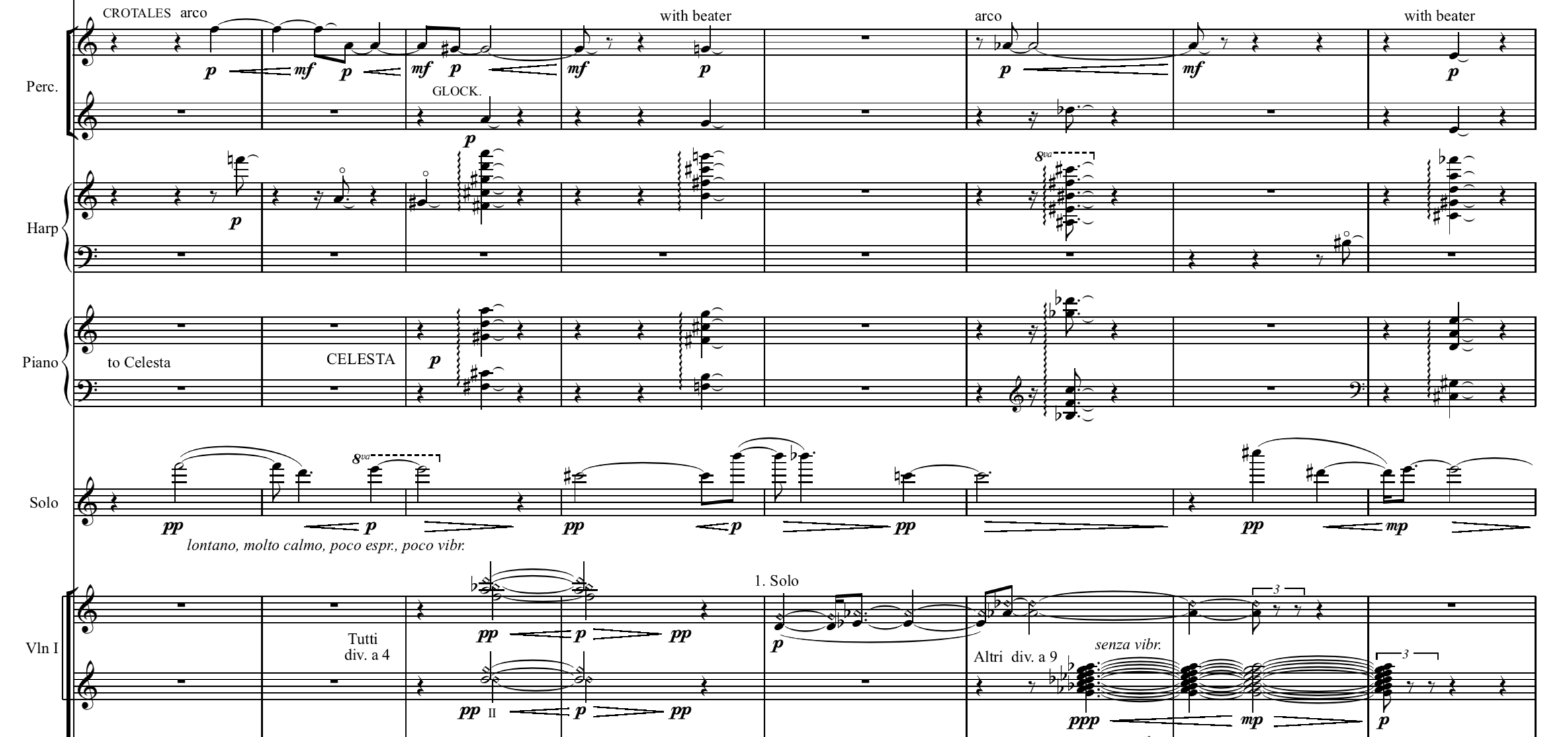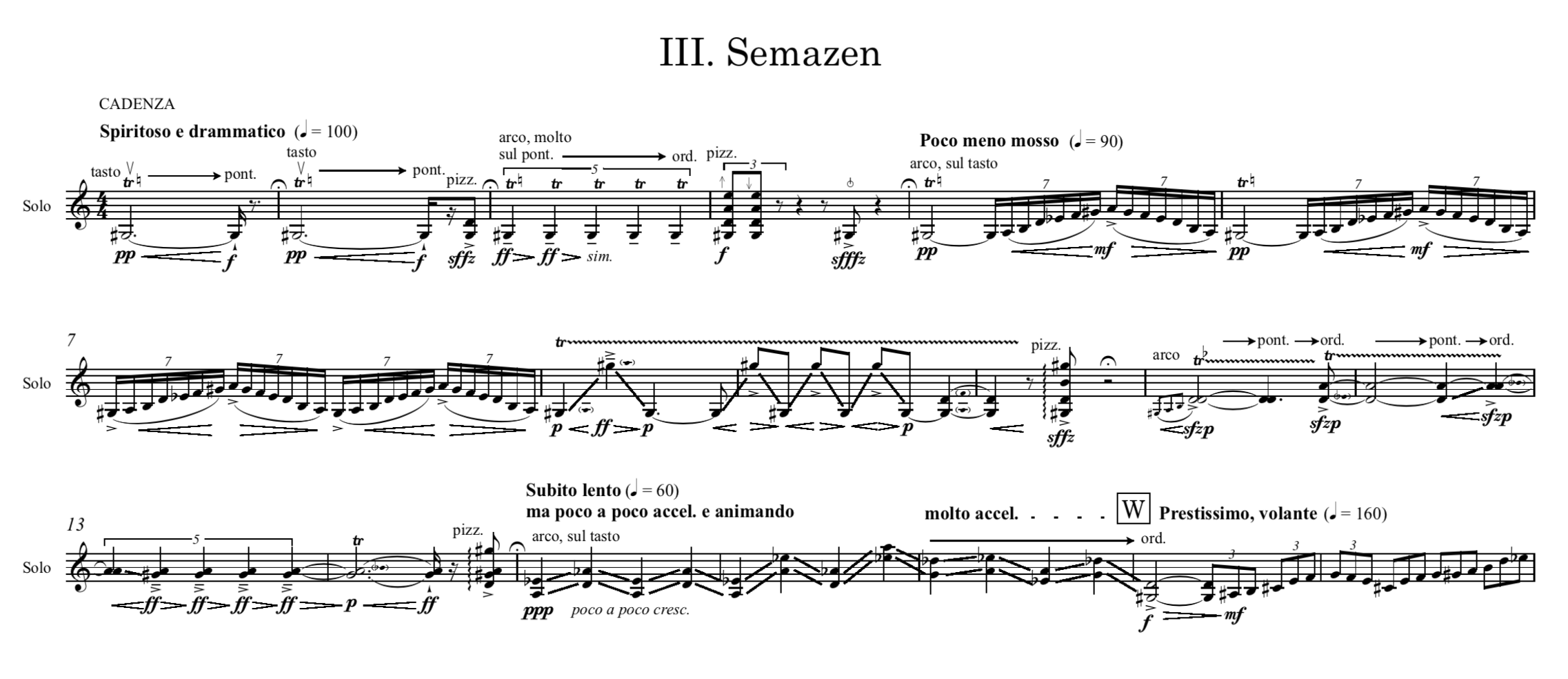Michael Norris is a finalist for the 2019 SOUNZ Contemporary Award | Te Tohu Auaha for his Violin Concerto 'Sama'. It was written for violinist Amalia Hall and was premiered in December 2018 by Orchestra Wellington, conducted by Marc Taddei.
You can watch a video interview with Michael here.
Could you tell us a bit about your Violin Concerto ‘Sama'?
The Violin Concerto ’Sama’ started life when I was thinking about the way in which music can be used to suggest directionality or abstract types of movement — such as the movement of bodies, the movement of biological organisms, even the movement of celestial objects. I was particularly interested in this idea of ‘centripetal’ motion: orbiting, circling, vorticality, whirling, spinning. I had already explored these kinds of motion in other works of mine, particularly the Deep Field series in which instrumental sounds are processed and ’spun’ around a circular eight-channel array by computer.
In Sama, then, I had become entranced by the ‘whirling dervishes’ (semazen) of the Sufi Mevlevi order in Turkey, and wanted to suggest something about their dance and their spirit, without imitating the music that accompanies, or without a kind of ‘literal’ translation of their dance into music. As such, I considered some of the underlying concepts behind the dance. The dancers whirl ecstatically, while reaching one hand up towards the heavens, and the other pointed down towards the earth. In this way, the dancer acts as a kind of conduit between heavens and earth. I developed this simple bodily concept into the basic underlying themes of the three movements. Firstly, in Movement One, ‘Ard’ (Earth), there is a sense of gradual growth, of an organic ’branching-out’ of the soloist, of sudden uprisings of energy—a burbling instability and effervesence that pervades the nervous, crackling atmosphere. In Movement Two, on the other hand, the orchestra depicts vaster, more cosmic spaces (‘Fada’ (Cosmos)). A ‘big bang’ opens the movement, scored across the full range of the orchestra, but which slowly ‘cools’ down until it condenses into a starry, pointillistic backdrop over which the soloist soars in the stratosphere. And then, in Movement Three (’Semazen’), the dancer begins to whirl—in the end, it’s a considerably more crazed whirling than in the actual Sufi ceremony — and the orchestra is whipped up into a state of ecstasy and intensity. The musical language is all my own; there is no reference to Arabic musical forms at all, and in many ways, it’s a very conventional classical concerto form. But I felt that the quite angular material and contemporary orchestration brings an edge to these concepts that elevates them from mere programme music.
 First movement b. 16-21, strings echoing or responding to the soloist.
First movement b. 16-21, strings echoing or responding to the soloist.
How did the opportunity to write the piece come about?
Marc Taddei called one day to offer the commission. I knew Amalia’s soloist chops through her premiere of Claire Cowan’s gorgeous violin concerto, and this impression was further cemented when I heard her perform the Bartók violin concerto sometime later. After hearing those two very different sides to Amalia’s playing, I really got to understand her capabilities as a soloist, her fearlessness and commitment to understanding the emotional weight of a work, and communicating that in a very direct, unfussy manner. She has this exciting mix between effortlessness and intensity that only true soloists manage to capture.
How much did you consult with Amalia during the composing process?
Very little — she wasn’t much in Wellington at the time, to be honest! We met after I had composed the entire solo part, and was just beginning the orchestration of the rest of the piece. I knew after she virtually sightread some of the difficult chromatic figures that we were in for a treat. There were a few minor tweaks with some rather ambitious harmonics, but otherwise we hardly changed anything.
How did you manage the relationship between the orchestra and soloist?
The orchestra primarily acts as a resonating chamber for the soloist — many of the orchestral parts derive from the soloist’s phrases. The orchestra also can be responsible for injecting energy or texture into the piece, or it can sometimes act as a fluid backdrop over which the soloist floats. Only rarely does the orchestra dominate proceedings; in which case, the soloist is either tacet, or plays rhythmic, non-melodic figures that add a kind of surface ‘grit’ to the orchestration.
How did you decide on Sama as your subject? Was it pre-compositional or did it reveal itself while you were writing?
Unlike many of my pieces in which concepts arise more organically, this concept was decided on before I even wrote a note.
 Second Movement b. 7-14, the soloist 'floating' in the stratosphere above points and rays of celestial light.
Second Movement b. 7-14, the soloist 'floating' in the stratosphere above points and rays of celestial light.
You often draw inspiration from various cultures around the world, eg Tuvan throat-singing (Sygyt, Khoomei Loops), various afterlife legends (Exitus) etc. Given western music’s historical issues with exoticism, how do you approach this subject material, especially when an expert or practitioner is not available for consultation?
Firstly, not every piece of mine draws influences from non-Western musical cultures; but it’s fair to say that a number of recent works have referenced ideas or sounds that do not come from a ‘European tradition'. While there is often a programmatical element drawn from these cultures, or even in some cases an instrument or sound source, I am careful not to engage in any kind of activity that might constitute copying, literal transcription or otherwise shallow imitations of the reservoir of melodic material or other unmediated cultural forms that make up the stylistic ‘DNA' of those cultures. Rather, I am interested in a more general sense of ‘self-provocation’, in that I like to try and question (develop?) my own musical practice by there is some kind of abstracted sonic, conceptual or gestural forms that I might refract through the prism of my own idiosyncratic compositional approaches. These ‘cultural influences’ are always on a very generic level, and may even be completely unrecognisable to someone from that culture, because they have passed through my own compositional ‘lens’. In that sense, they are more about my own listening experiences and practices (I listen to a *lot* of non-Western music), and trying to search for sonic conceptions that excite me.
By way of example, in my work for throatsinger, Sygyt, I used Jonny’s voice not at all in a traditional manner (although there is a small nod to more traditional repertoire at one quiet point in the piece). Rather I collaborated with him to explore not just his throatsinging, but also his broader vocalisation techniques, to see if there were ways in which his singing might provoke new concepts of harmony and texture in my own writing. As part of his solo part, I asked him to perform scales in harmonics, to abruptly shift from one kind of throatsinging to another, and to hit certain harmonics that traditional Tuvan throatsingers tend to avoid. This made for a very idiosyncratic, very personal collaboration between myself and Jonny, that was as much rooted in our own sonic explorations and experiences as anything authentically Mongolian.
If Western Art Music is only interested in endlessly regurgitating its own canon, then it will ossify, trapped in its own self-referential echo chamber. Only by looking outwards—albeit with respect and love—can classical music find new forms of expression, colour and relevance.
 Third Movement, the soloist begins the 'whirling'.
Third Movement, the soloist begins the 'whirling'.
The full score of Violin Concerto 'Sama' can be obtained from SOUNZ here.
SOUNZ blog is designed for expressive discussion and debate amongst the arts and broader community. This is intended to be a safe space so please remember to keep comments respectful and avoid personal attacks, criticisms of specific organisations and defamatory language. Comments are moderated to ensure that they comply with SOUNZ’s Community guidelines.
